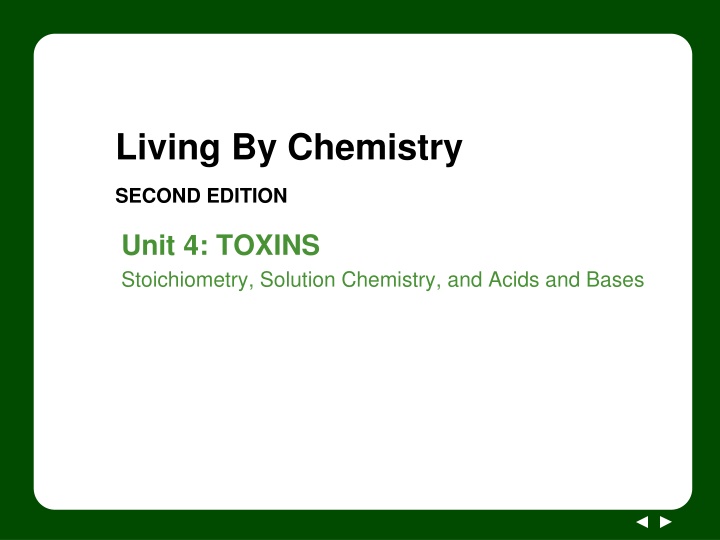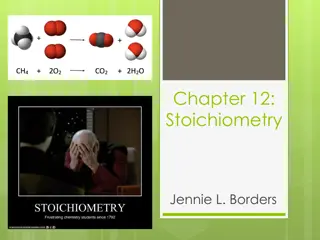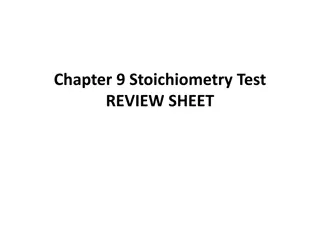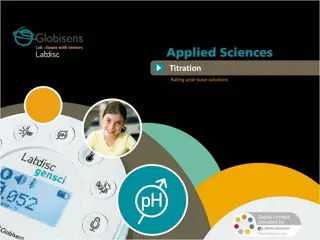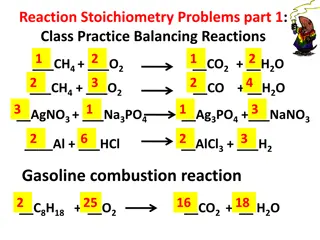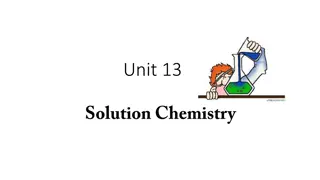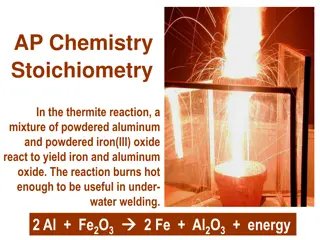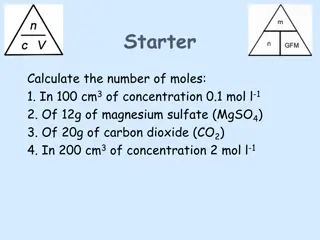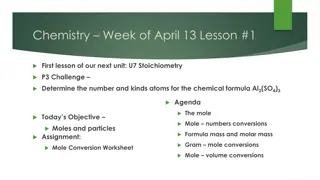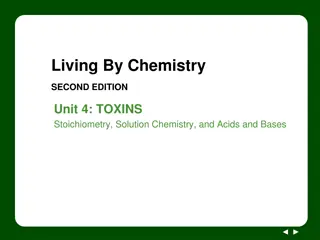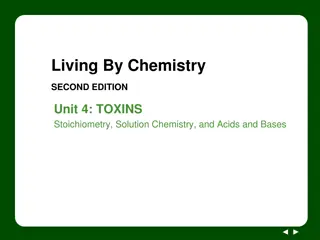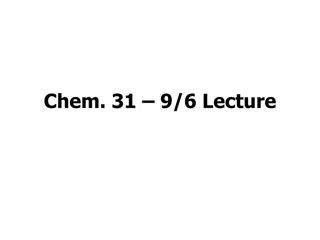Stoichiometry and Solution Chemistry Insights
Delve into the realm of solution chemistry, exploring concepts of stoichiometry and acids and bases. Understand solution concentration at a particulate level, calculate moles of particles from molarity and volume, and distinguish between particles in ionic and molecular solutions. Engage in discussions on particle views, solution concentrations, and moles of particles. Prepare for hands-on activities in a safe laboratory environment, where you'll analyze solution properties without taste testing. Uncover the proportional relationship between moles of particles and solution volume, paving the way for a deeper understanding of chemical phenomena.
Download Presentation

Please find below an Image/Link to download the presentation.
The content on the website is provided AS IS for your information and personal use only. It may not be sold, licensed, or shared on other websites without obtaining consent from the author.If you encounter any issues during the download, it is possible that the publisher has removed the file from their server.
You are allowed to download the files provided on this website for personal or commercial use, subject to the condition that they are used lawfully. All files are the property of their respective owners.
The content on the website is provided AS IS for your information and personal use only. It may not be sold, licensed, or shared on other websites without obtaining consent from the author.
E N D
Presentation Transcript
Living By Chemistry SECOND EDITION Unit 4: TOXINS Stoichiometry, Solution Chemistry, and Acids and Bases
Lesson 81: Drop In Molecular Views
ChemCatalyst Examine the gummy bear in the sugar solution you prepared in class yesterday. 1. What does the gummy bear s appearance suggest about the solution? 2. Is the solution saturated? Why or why not? Imagine that you have 1 L of a 2.0 M sugar solution in a large container. You pour out 100 mL into a beaker. 1. Did the concentration of sugar in the large container change? 2. Did the number of moles of sugar in the large container change?
Key Question How can you convert from molarity to moles of solute?
You will be able to: describe solution concentration on a particulate level calculate the number of moles of particles from the molarity and the volume of a solution differentiate between particles in ionic and molecular solutions
Prepare for the Activity Work in groups of four. Never taste substances in the laboratory.
Discussion Notes The particle views represent molecules dissolved in water. 4 in. 3 in. Particle view 1 120 particles Number density: 10 particles/in2 Particle view 2 60 particles Number density: 5 particles/in2 Particle view 3 30 particles Number density: 2.5 particles/in2 Particle view 4 15 particles Number density: 1.25 particles/in2
Discussion Notes (cont.) Any sample cut out of the original Particle View 1 has the same concentration of dots per square inch as the large sample.
Discussion Notes (cont.) Concentration does not depend on the size of the sample. In order to create solutions C and D, you must dilute the original solution to half its molarity.
Discussion Notes (cont.) The relationship between the number of moles of particles in a solution and the volume of the solution is proportional. Number of moles = k volume of solution (in liters)
Wrap Up How can you convert from molarity to moles of solute? The relationship between moles of molecules in a solution and liters of solution is a proportional one described by the formula M = mol/L, where M is the molarity of the solution. The concentration (or molarity) of a solution does not change with the size of the sample. In calculating the number of moles of particles in an ionic solution, it is necessary to take into account all the ions in the formula.
Check-In 1. How many moles of sugar, C12H22O11, are in 52 mL of a 0.50 M solution? 2. How many moles of sugar, C12H22O11, are in 26 mL of a 0.50 M solution?
